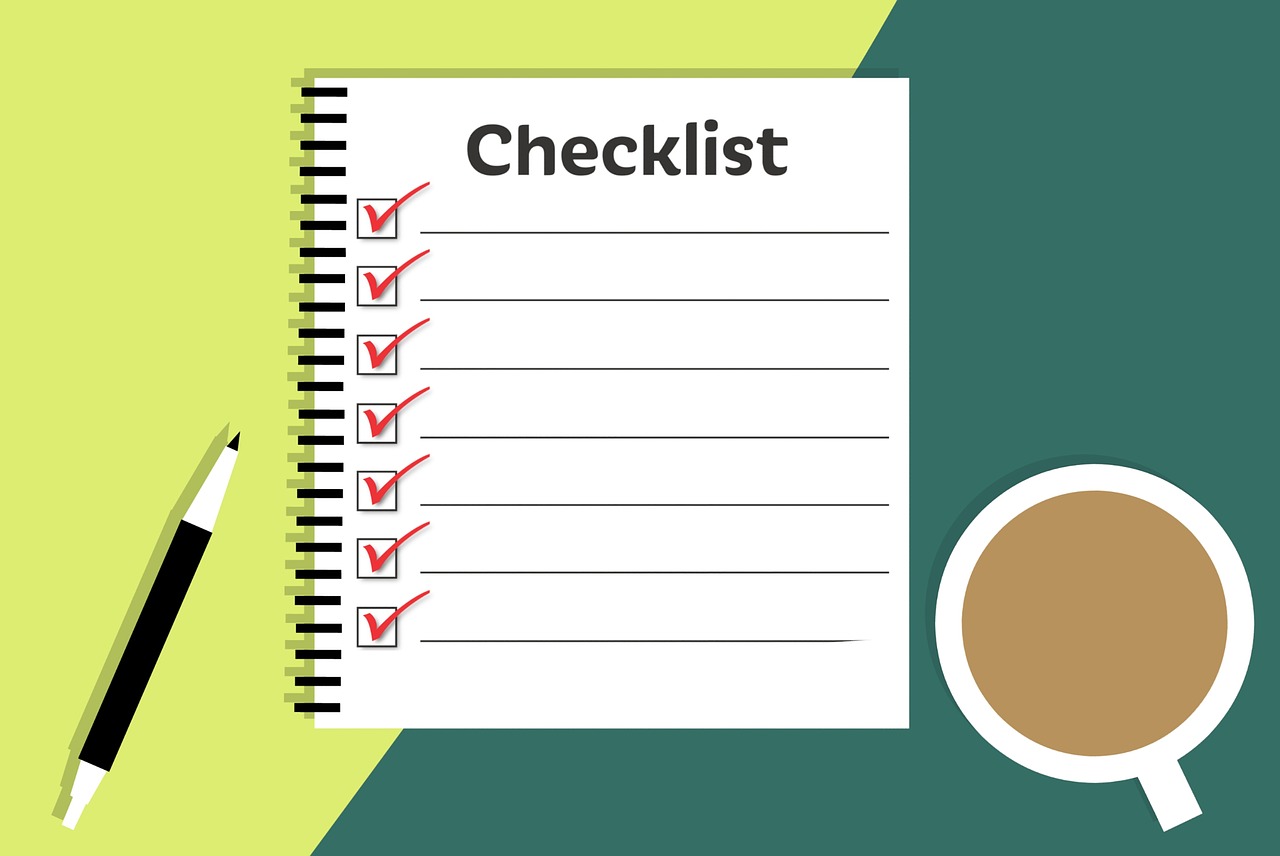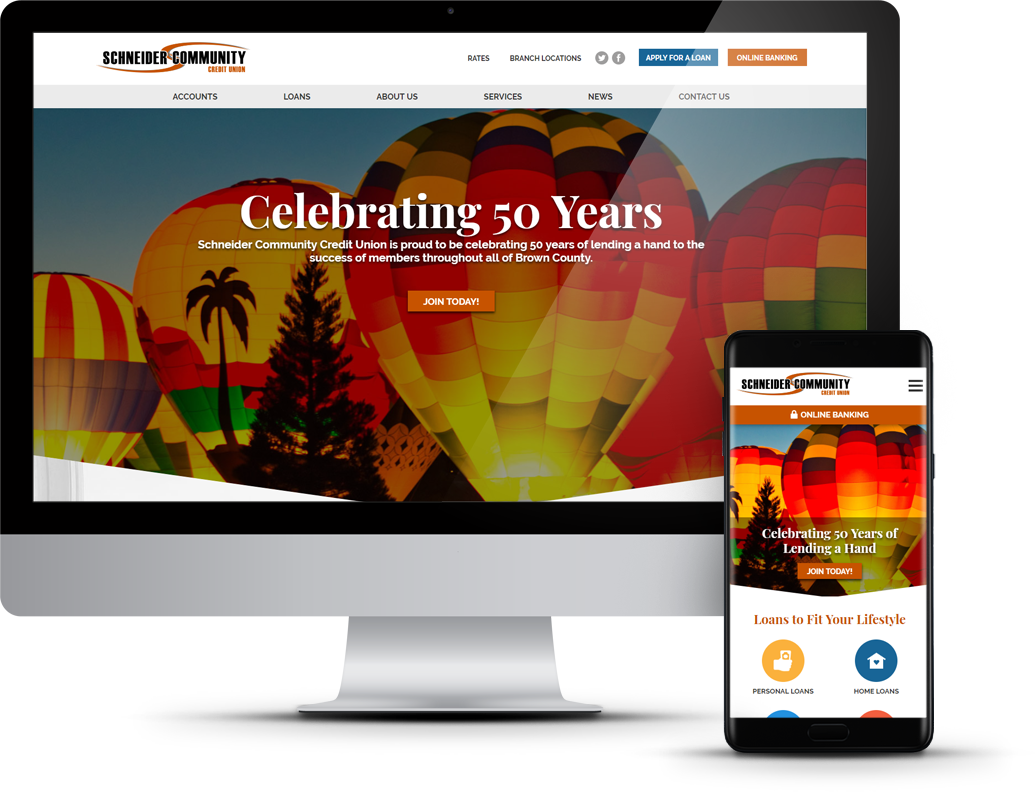A Simple Website Checklist for 2019
Thanks for taking the time to read through our website checklist! We encourage you to use this as a reference point as you go about your website efforts in 2019.

Your Website Stinks!
OK, probably not. But we got your attention, right? When someone first arrives at your website, you have 5 seconds to grab their attention. Their first impression of your site will determine whether or not they stick around. Here’s a simple set of questions you can ask yourself when examining your website.
- Do I clearly state what it is that my business or organization does?
- Am I actually connecting with my target audience (through video, imagery, CTAs, etc)?
- Is my website converting visitors into leads (am I getting them where I need them to go)?
If you answered “yes” to these questions, you’re off to a good start.
Your website’s design should center around the questions above but also be an accurate representation of who you are as a company. If your company/product is fun, youthful, and full of energy; then your website should reflect that. If your company is a bit more “business professional” or caters to an older demographic, your website should be an extension of that philosophy.
Is your website easy to navigate?
If your audience can’t find what they’re looking for, they will leave. Plain and simple. As you’re evaluating your website, ask yourself: Does my menu/navigation structure make sense to my audience? Am I calling out the frequently visited pages? Am I allowing my audience to easily navigate through the process I have set up for them?
Is your website mobile-friendly?
Our phones now have the capability to do just about everything a computer can. In 2018, 52% of all worldwide online traffic was generated through mobile phones, up from 50% in the previous year. With that being said, it is important that your website is built to accurately display on smartphones. Google and other search engines are considering this one of the top ranking factors in 2019. Basically, if your competitors’ websites are optimized appropriately for mobile devices and yours isn’t, you’ll most likely get beat out a majority of the time.

Your Content
Individual pages for each product/service
Google wants to give their users the most helpful and relevant information as they’re performing searches. This means that whenever someone performs a search Google has less than 1 second to analyze every website out there, find the ones that contain relevant subject matter, and then rank them in a hierarchy based on how helpful they believe the website is.
So, what does this mean? If you have a variety of products/services on your site, make sure that you have individual pages built out for each one. Not only will this appeal to Google and other major search engines, but it will also provide a better overall experience for your visitors.
Keyword optimized
In the last point we established that each page on your website should focus on a particular topic. For example, a local plumber might have 5 pages on their website; Home, Bathroom Remodeling, Drain/Sewer Cleaning, Water Heater Repair, and a Contact page. With that being said, each page should focus on a keyword that relates to the page topic. The Bathroom Remodeling page might focus on keywords such as “bathroom design” and “bathroom renovations.” It’s important to focus on 1-2 keywords per page, as this makes it easier for search engines to read your website.
*Tip: Use the Google Keyword Planner to see what people are searching for in your industry!
High-quality images AND videos
This is a big one for 2019. If your website doesn’t include high-quality, properly optimized photos videos, don’t be surprised if you fall behind. Google wants to see you providing your visitors with relevant and engaging multimedia. The best part is that you don’t have to break the bank to accomplish this. If you’re looking to do it yourself, investing in a quality DSLR camera isn’t a bad option, as you can use it in a variety of ways to create digital content to help promote your company. The other option is to outsource your multimedia to a professional, which has its obvious advantages. Either way, you’ll want to make sure any photos or videos that you house on your website are up to par for both content and quality.
Clear Calls-To-Action
Moving your visitors through a funnel while navigating your website will help increase the number of sales leads you to acquire from your website. It’s important to tell your visitors what you want them to do as they land on various pages. For example, if you are a company that blogs on a consistent basis, you have the opportunity to promote that content on the service/product pages that correspond with that particular topic. This will further engage your audience, as well as establish that you are a trustworthy source regarding your industry.
You’ll also want to create Calls-To-Action that focus on your general website goals (form submissions, RFQs, direct sales). One quick tip when it comes to gathering information about your sales leads; the less you ask for, the more likely they are to convert. A first name and email address are all you need to keep the conversation moving forward.
Consistency
Both your visitors and Google want to see you keeping your website updated with relevant content. Luckily, you don’t have to write a novel every time you want to add a new page to your website. As long as what you’re publishing offers real value to your readers, you’re safe. A few different ideas of topics to write about include:
- Educational articles/blogs
- Company news and updates
- Industry trends
*Side note: The average word length of written content that ranks on the first page of Google is approximately 1,890 words. Remember this the next time you’re creating a new page on your website!
Pleasing The Search Engines
Google My Business
Claiming your Google My Business listing is one of the most effective tactics when it comes to optimizing your website for local search. Verify your company and optimize your account with all of the necessary information including:
- Reviews/testimonials
- Industry categories
- Address/location
- Hours of operation
- Photos
- Posts
Google Search Console
The Google Search Console is a web service by Google that allows digital marketers the ability to check indexing status and optimize visibility of their website. Make sure that your website is connected and verified.
Google Analytics
What good is a website without knowing how effective it is? Setting up a Google Analytics account will help give you detailed insight into how visitors are using it.
Bing Places For Business
Google also likes to see that you’re verified on other major directories and search engines. It only takes a few minutes to set up your business on Bing, so do it!
Manta
This platform is an online directory built specifically for small businesses. The majority of Manta’s visitors are consumers looking to research, connect, or buy from companies on a more local level. Having your business’ account and information properly optimized will give a positive signal to Google and other major search engines.
XML Sitemap Submission
In simpler terms, an XML Sitemap is like a blueprint of your website’s layout. When you have one, search engines are able to “crawl,” or read your website’s pages in a more organized fashion.
Meta Data Optimization
This is the information that tells search engines what the focus of the page is, including page title, description, and focus keywords. You’ll want to be specific when writing these for each individual page, as the more it corresponds with the rest of the content of the page, the better it will rank in search engines. Below is an example of what the Meta Data for the Web Design and Development Page might look like for Webfitters.
- URL: www.webfitters.com/what-we-do/web-design-development/
- Page Title: Website Design & Development Services | Green Bay, WI
- Page Description: At Webfitters, our team of talented web designers and developers are committed to providing you with the online presence your company needs in order to be successful.
- Focus keyword: web design
Notice how the phrase “web design” is consistent throughout each point above. This is one of the most effective ways to rank your website for specific keywords.
Page Speed
How fast your website loads on various devices will also play a significant role in how search engines evaluate you. Not only is it important from a technical standpoint, but it’s vital in keeping people on your website. A majority of people will leave if a page takes longer than 4 seconds to load, leading to a high Bounce Rate (percentage of visitors who leave a website immediately after arriving).
*Tip: Use the Google Page Speed tool to assess your current website’s performance.
Inbound/Outbound Links
Being verified on Google and other major directories will significantly increase your website’s authority. It’s important to acquire all types of links, both large and small. Based on your industry and geographical location, create a strategy that focuses on external linking opportunities. This will help build the authority behind your website, leading to better overall rankings. A few examples include:
- Yelp
- BBB
- City Search
- Industry-specific resources
- Local publications

Promoting Your Website
Social Media
The targeting features offered by social media platforms gives you the opportunity to place personalized content in front of your ideal audience. Consider building awareness for your company with the following platforms:
Pay-Per-Click advertising
As defined by WordStream, “a pay-per-click campaign is a form of internet marketing in which advertisers pay a fee each time one of their ads is clicked. Essentially, it’s a way of buying visits to your site, rather than attempting to earn those visits organically.”
By placing your ads at the top of the search results when someone is looking for a product or service similar to what you offer, you increase your website’s visibility, leading to more potential customers. Google Ads is the most popular platform for this type of advertising, offering a variety of campaign options that focus on achieving different website goals (general awareness, sales leads, direct sales).
Email Marketing Campaigns
One effective way to build a base of potential customers is to gather their email addresses that you can market to later on. In order to do this, you’ll need to propose some type of value to your readers before they’re going to hand out their personal information. One of the most effective ways to tackle this task is to offer a piece of content that addresses the problem that they’re trying to solve.
For example, for our own website visitors who are looking to increase their company’s online efforts in 2019, we would offer this blog post in a more extensive eBook that people would be able to download in PDF form. In order to do this, they would need to fill out and submit a two field form consisting of their first name and email address. Other types of content you can provide include videos, case studies, and how-to/DIY guides.
Conclusion
Hopefully, the information we’ve outlined above gives you some insight regarding how to go about your website efforts in 2019. By properly optimizing your website for both search engines and your visitors, you’ll maximize your long term success.
Looking for a checklist for developers? Our friends at Toptal provided this helpful checklist.
If you’re interested in taking your online presence to the next level but aren’t sure where to start, our team would love the opportunity to help get you started in the right direction!
